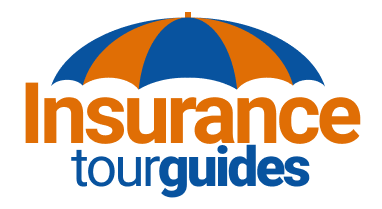Insurance is essential for protecting your finances, but high premiums can put a strain on your budget. The good news? There are ways to lower your insurance costs without sacrificing the coverage you need. From smart shopping strategies to discounts you might not know about, look into the best ways to save on your insurance premiums while keeping yourself fully protected.
1. Shop Around for the Best Rates
Insurance rates vary by company, so don’t settle for the first quote you get. Comparing policies from multiple insurers can help you find better coverage at a lower price.
How to compare effectively:
- Get quotes from at least three companies (use online comparison tools or work with an independent agent).
- Ask about policy differences—cheaper isn’t always better if coverage is lacking.
- Check customer reviews to ensure the insurer is reliable with claims and customer service.
2. Increase Your Deductible
Your deductible is the amount you pay out of pocket before insurance kicks in. A higher deductible usually means a lower monthly premium.
Example savings:
- Raising your car insurance deductible from $500 to $1,000 could lower your premium by 15-30%.
- Increasing your homeowners insurance deductible from $1,000 to $2,500 could save even more.
Just make sure you have enough savings to cover the higher deductible if you ever need to file a claim.
3. Bundle Your Policies
Many insurers offer discounts when you purchase multiple types of coverage from them, like combining:
- Auto and home insurance
- Renters and auto insurance
- Life and health insurance
Bundling can save you anywhere from 5% to 25% on your total premiums, so check with your provider to see what discounts they offer.
4. Maintain a Good Credit Score
Believe it or not, your credit score can impact your insurance rates. Insurers use it to determine how risky you are as a policyholder.
Ways to improve your credit score:
- Pay bills on time.
- Reduce credit card balances.
- Avoid opening too many new credit accounts at once.
A better credit score could mean lower premiums on auto, home, and even life insurance.
5. Take Advantage of Discounts
Many insurers offer hidden discounts that policyholders don’t always know about. Some common discounts include:
- Good driver discount (for accident-free drivers)
- Low mileage discount (if you drive less than average)
- Loyalty discount (for staying with the same insurer for multiple years)
- Safety features discount (for having airbags, anti-theft devices, or smart home security systems)
- Non-smoker discount (for health and life insurance)
Ask your insurer what discounts you might qualify for—you could be missing out on easy savings!
6. Adjust Your Coverage Based on Your Needs
You might be paying for insurance coverage you don’t actually need. Review your policies regularly to ensure you’re not over-insured.
For example:
- If you have an older car, dropping comprehensive and collision coverage could save money.
- If your home is fully paid off, you might be able to adjust certain coverage limits while keeping protection intact.
- If your health plan has overlapping vision or dental benefits, compare coverage to avoid paying for duplicate services.
7. Drive Safely and Avoid Claims
For auto insurance, your driving record heavily impacts your premium. Avoiding accidents and violations can help you qualify for safe driver discounts and keep rates low.
Some insurers also offer usage-based insurance where they track your driving habits (such as speed, braking, and mileage) through a mobile app or device. If you’re a safe driver, this could lead to significant savings.
8. Pay Your Premiums Annually Instead of Monthly
Many insurance companies charge processing fees for monthly payments. If you can afford to pay your full premium upfront, you could save between 5-10% over the year.
9. Ask About Employer or Group Insurance Discounts
Some employers, professional associations, or alumni groups offer discounted insurance rates for their members. Check if you’re eligible for:
- Group health or life insurance through your job.
- Auto or home insurance discounts through a professional organization.
10. Regularly Review and Update Your Policy
Your insurance needs change over time, so it’s important to review your policies at least once a year to ensure you’re getting the best rate. If you’ve had major life changes—like getting married, moving, or retiring—you might qualify for lower rates.
Lower Your Costs Without Losing Protection
Saving on insurance doesn’t mean cutting corners on coverage. By shopping around, adjusting your policy, and taking advantage of discounts, you can keep your premiums affordable while staying fully protected. Take a few minutes to review your current policies—you might find big savings waiting for you!

